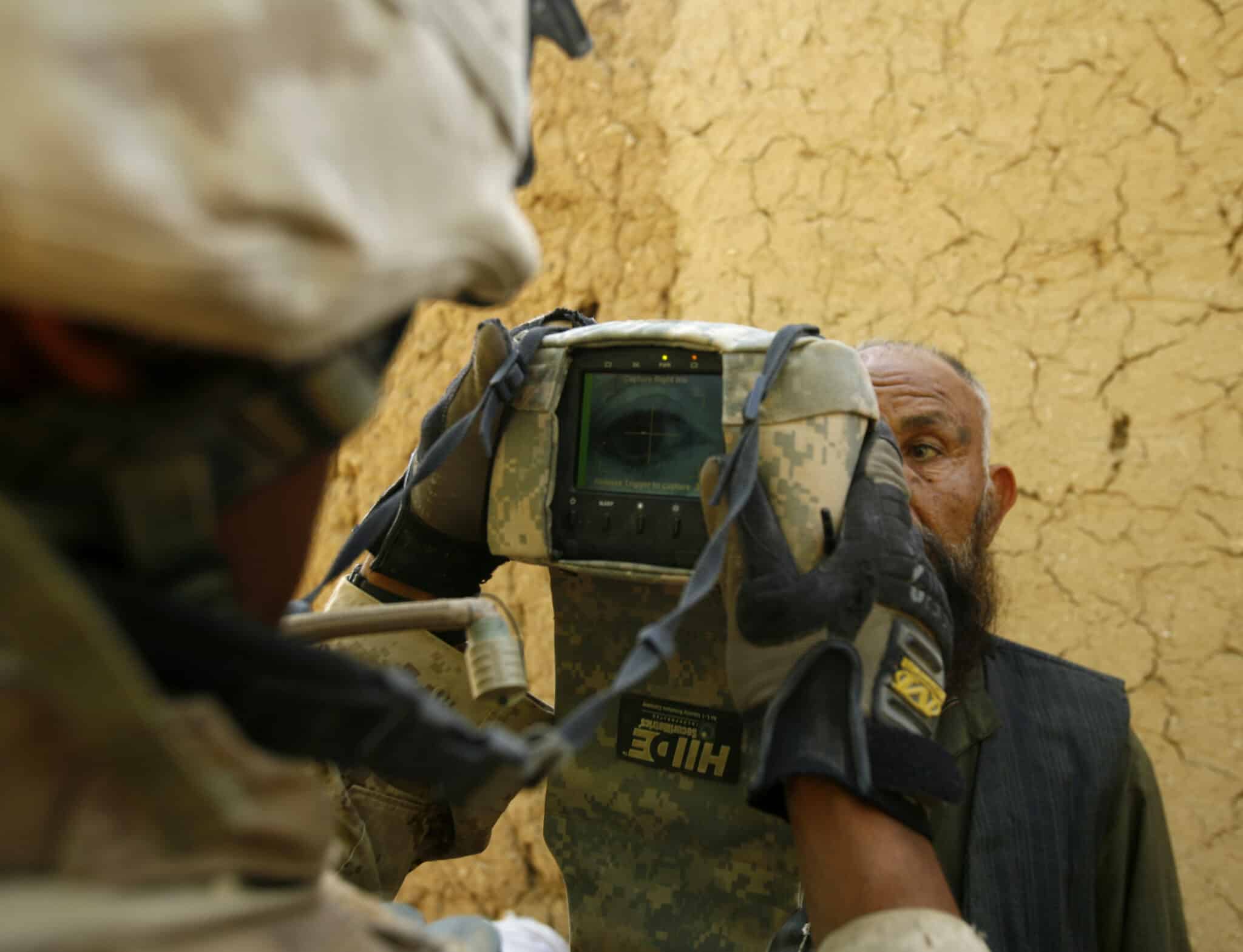Facial recognition technology is changing the way countries manage immigration. In Bangladesh, this technology is being used to improve security and streamline processes at borders.
As global travel increases, so do the challenges of managing immigration. Bangladesh faces the need to balance security with efficiency. Facial recognition offers a solution by allowing for quick identification of travelers. This technology can help reduce fraud and enhance safety measures.
With a growing number of people crossing borders, effective solutions are essential. Understanding how facial recognition works in immigration can shed light on its benefits and challenges. This blog will explore the role of facial recognition in Bangladesh’s immigration system, its impact on travelers, and the broader implications for security.

Credit: www.crisisgroup.org
Introduction To Facial Recognition In Bangladesh
Facial recognition technology is growing in Bangladesh. This technology helps identify people by analyzing their facial features. It has many uses, especially in immigration and security.
The Rise Of Biometric Technology
Biometric technology is becoming common in many countries. It includes methods like fingerprints, iris scans, and facial recognition.
- Biometric systems are fast and efficient.
- They enhance security measures.
- They provide accurate identity verification.
In Bangladesh, the use of facial recognition is increasing. Airports and border control points are adopting it. This helps authorities manage immigration better.
Importance In Border Security
Facial recognition plays a key role in border security. It helps verify the identity of travelers quickly.
| Benefit | Description |
|---|---|
| Speed | Quick identity checks reduce wait times for travelers. |
| Accuracy | Reduces the chances of human error in identification. |
| Security | Helps identify suspicious individuals at border points. |
Facial recognition also improves safety for citizens. It helps prevent illegal immigration and other criminal activities. This technology is vital for Bangladesh’s future security plans.
Bangladesh’s Border Control Evolution
Bangladesh’s border control has seen many changes. From manual checks to modern technology, the journey has been significant. The country faces many challenges. Managing immigration is one of them. With the rise of technology, border security has improved. This post explores this evolution.
Historical Methods Of Immigration Control
In the past, immigration control relied on simple methods. Officers checked passports manually. Long lines formed at border points. The process was slow and often frustrating.
Records were kept on paper. This made it hard to track visitors. Miscommunication was common. Some people slipped through the cracks.
Immigration rules were basic. Many relied on physical identification. This led to mistakes. Fraud and identity theft were frequent issues.
Integration Of Technology At Borders
Today, technology plays a key role in border control. Bangladesh has started using facial recognition systems. This helps identify individuals quickly and accurately.
Biometric systems collect data from travelers. They scan faces and fingerprints. This process is faster than manual checks. It also reduces human error.
Digital records improve tracking of immigrants. Authorities can access information instantly. This helps manage risks more effectively.
Smart cameras monitor border areas. They alert officials to unusual activities. This enhances overall security at borders.
Facial Recognition Technology Explained
Facial recognition technology uses advanced systems to identify individuals. This technology is increasingly used in immigration processes in Bangladesh. It helps to speed up border control and enhance security. Understanding how this technology works is crucial for its effective use.
How Facial Recognition Works
Facial recognition systems rely on several key steps:
- Image Capture: A camera captures an image of a person’s face.
- Face Detection: The system locates the face in the image.
- Feature Extraction: Unique features of the face are identified.
- Comparison: The extracted features are compared to a database.
- Identification: The system finds a match or confirms identity.
This process happens quickly. It can take just seconds to identify a person.
Advancements In Biometric Algorithms
Recent improvements have made facial recognition more accurate:
- Deep Learning: Uses neural networks to improve recognition.
- 3D Imaging: Provides better accuracy by analyzing depth.
- Real-Time Processing: Allows instant identification in crowded places.
| Algorithm Type | Benefits |
|---|---|
| Deep Learning | High accuracy and adaptability to different conditions. |
| 3D Face Recognition | Improved recognition even with facial changes. |
| Infrared Imaging | Works in low-light conditions for better security. |
These advancements make facial recognition a reliable tool for immigration. They ensure a smoother experience for travelers and authorities alike.
Implementation At Bangladeshi Airports And Borders
The use of facial recognition technology is growing in Bangladesh. Airports and borders are adopting this system. It aims to make travel smoother and safer for everyone. This technology helps identify travelers quickly. It also enhances security measures at entry points.
Pilot Programs And Rollouts
Bangladesh has started pilot programs for facial recognition. These programs test the system at key airports. Dhaka’s Hazrat Shahjalal International Airport is one of the first to try it. Officials gather feedback from travelers and staff.
After the pilot phase, the rollout will expand. More airports and border points will adopt this technology. The goal is to create a seamless travel experience. Travelers can expect shorter wait times and less hassle.
Impact On Passenger Experience
Facial recognition improves the passenger experience significantly. It speeds up the check-in and boarding processes. Travelers can pass through security faster than before.
This technology reduces human error in identity checks. It also lowers the chances of identity fraud. Passengers feel safer knowing there are strong security measures in place.
Overall, the new system aims to enhance travel comfort. Travelers can focus on their journey instead of long lines.
Security And Efficiency Benefits
Facial recognition technology offers significant security and efficiency benefits for immigration in Bangladesh. This technology helps authorities monitor borders more effectively. It also speeds up immigration processes, making travel easier for everyone.
Enhanced Surveillance Capabilities
Facial recognition enhances surveillance in airports and border areas. It helps identify individuals quickly. Authorities can spot potential threats faster than before.
This technology analyzes images in real time. It compares faces against a database of known individuals. This method reduces the chances of human error during identification.
Streamlined Immigration Processes
Facial recognition makes immigration processes faster. Travelers spend less time waiting in line. The system scans faces and verifies identities almost instantly.
This efficiency helps reduce congestion at borders. It allows staff to focus on more complex tasks. Passengers can move through checkpoints with minimal hassle.
Privacy Concerns And Ethical Implications
Facial recognition technology in immigration raises important questions. People worry about their privacy. This technology can identify individuals without their consent. It can track movements and behaviors. Understanding these issues is essential for a fair system.
Data Protection And Privacy Laws
Bangladesh has laws to protect personal data. These laws aim to secure individual privacy. However, facial recognition can conflict with these laws. Here are some key points:
- Data Collection: Facial recognition systems collect vast amounts of data.
- Consent: Many individuals do not provide consent for data use.
- Data Security: Storing sensitive data requires strong security measures.
- Accountability: Authorities must be accountable for data misuse.
These points highlight the need for strong data protection laws. Clear guidelines can help protect citizens’ privacy.
Balancing National Security With Civil Liberties
National security is vital for any country. It ensures safety and order. Yet, it should not come at the cost of civil liberties. Here are some considerations:
- Privacy Rights: Citizens have rights to privacy and freedom.
- Surveillance Risks: Excessive surveillance can lead to abuse of power.
- Transparency: Authorities must be transparent about their actions.
- Public Trust: Trust is crucial between citizens and the government.
Striking a balance is key. Both security and personal freedoms matter. Responsible use of technology can help achieve this balance.
International Cooperation And Standards
Facial recognition technology in immigration is crucial for security. Bangladesh aims to meet global standards. It seeks support and collaboration with other nations. This ensures the technology is effective and responsible.
Global Biometric Databases
Countries use biometric databases to manage immigration effectively. These databases store facial data, fingerprints, and other identifiers. Here are some key points:
- They help in identifying individuals quickly.
- They improve border security.
- They reduce fraudulent activities.
Bangladesh is working to connect with global databases. This connection enhances information sharing. It also supports accurate identification across borders. Here’s a comparison of some global biometric systems:
| Country | System Name | Key Features |
|---|---|---|
| USA | IDENT1 | Facial recognition and fingerprint matching |
| EU | EUROSUR | Cross-border data sharing |
| India | Aadhaar | Unique identification system |
Bangladesh’s Compliance With International Norms
Bangladesh is committed to international norms in biometric data use. Compliance helps build trust with other nations. It also protects citizens’ rights. Here are some compliance measures:
- Adhering to privacy laws.
- Ensuring data security protocols.
- Participating in global forums on biometric standards.
By following these norms, Bangladesh can enhance its immigration process. This approach fosters international cooperation. It also ensures the ethical use of technology.

Credit: www.context.news
Future Prospects Of Biometric Immigration
The future of biometric immigration in Bangladesh looks promising. Facial recognition technology will change how people enter the country. It promises to make the process faster and more secure. This will help both travelers and officials. Let’s explore the innovations on the horizon and the potential expansion of these technologies.
Innovations On The Horizon
Several innovations are expected in the field of biometric immigration. These advancements will enhance efficiency and security.
- Real-time verification: Faster processing at entry points.
- Integration with AI: Improved accuracy in identifying individuals.
- Mobile applications: Allowing travelers to pre-register their information.
These innovations will streamline immigration processes. They will reduce waiting times. Travelers will enjoy a smoother experience. Officials will have better tools for security.
Potential Expansion To Other Applications
The use of facial recognition technology may extend beyond immigration. Here are some possible applications:
- Border security: Enhancing safety at national borders.
- Public safety: Identifying suspects in crowded places.
- Access control: Securing restricted areas like airports and government buildings.
These applications can improve overall safety. They can also help in managing large crowds. The technology will continue to evolve, offering new solutions.
Case Studies: Success Stories And Challenges
Facial recognition technology has made waves in immigration systems. In Bangladesh, this technology offers great benefits but also poses challenges. Exploring case studies reveals both successful implementations and lessons from problematic deployments.
Exemplary Implementations
One notable success story is the use of facial recognition at Dhaka Airport. This system speeds up the immigration process. Travelers can pass through checkpoints with ease. It reduces waiting times significantly.
Another example comes from a pilot project in border control. Authorities used facial recognition to identify individuals with outstanding warrants. This helped enhance security and maintain law and order. The project showed positive results in capturing wanted criminals.
These implementations have increased efficiency. They improved overall traveler experience. Many citizens expressed satisfaction with the technology’s effectiveness.
Lessons Learned From Problematic Deployments
Privacy concerns also emerged. Many individuals worry about surveillance. The lack of clear regulations raises ethical questions. Authorities must address these issues to gain public trust.
Another challenge is the technology’s dependence on quality data. Poor data can produce unreliable results. Ensuring high-quality input is crucial for success.
These lessons highlight the need for careful planning. Stakeholder engagement is essential. Transparency can help alleviate public fears. Continuous assessment and adjustments can improve future deployments.
“`
Credit: www.kioskmarketplace.com
Public Perception And Acceptance
Facial recognition technology in immigration is growing in Bangladesh. It raises many questions. People wonder how safe it is and if it respects privacy. The way the public feels about this technology is important. Understanding their views helps shape future use.
Survey Results On Biometric Systems
Recent surveys show mixed feelings about biometric systems. Some people trust these systems to improve security. They believe it helps speed up immigration processes.
Others worry about privacy issues. They fear personal data may not be safe. Many are unsure how their information is used. These concerns can affect acceptance of the technology.
Surveys indicate that education plays a big role. People who know more about the technology tend to support it. This shows the importance of clear information sharing.
Government Efforts In Public Education
The government has started public education campaigns. They aim to explain how facial recognition works. These efforts help ease fears and build trust.
Workshops and seminars provide valuable information. They focus on safety measures and data protection. Clear communication helps address public concerns.
By educating the public, the government hopes to gain acceptance. An informed public is more likely to embrace new technologies. This acceptance is vital for the success of facial recognition in immigration.
Frequently Asked Questions
What Is Facial Recognition Immigration In Bangladesh?
Facial recognition immigration in Bangladesh involves using advanced technology to identify individuals at border control points. This system enhances security and streamlines the immigration process. It helps authorities verify identities quickly and efficiently, reducing the chances of fraud and improving overall safety at entry points.
How Does Facial Recognition Technology Work?
Facial recognition technology captures an individual’s facial features and compares them to a database. It analyzes various points on the face, such as the distance between the eyes and the shape of the jaw. This process allows for quick identification, enhancing border security and immigration processes.
What Are The Benefits Of Facial Recognition For Immigration?
The benefits of facial recognition for immigration include improved security, reduced wait times, and enhanced accuracy in identity verification. It streamlines processing at border checkpoints, allowing for a more efficient flow of travelers. Additionally, it can help prevent identity fraud and enhance national security measures.
Is Facial Recognition Technology Safe To Use?
While facial recognition technology is generally safe, concerns about privacy and data security exist. It is crucial for authorities to implement strict regulations to protect personal information. Transparency and accountability in how data is collected and used can help mitigate these concerns.
Conclusion
Facial recognition technology in immigration offers both benefits and challenges. It helps speed up processes and improve security. However, concerns about privacy and accuracy remain. Balancing efficiency with respect for personal rights is crucial. As Bangladesh continues to adopt this technology, public awareness is key.
Citizens should engage in discussions about its use. Understanding its impact will shape future policies. Ensuring transparency and fairness will build trust. The future of immigration in Bangladesh depends on responsible use of this technology. Let’s focus on creating a system that works for everyone.








